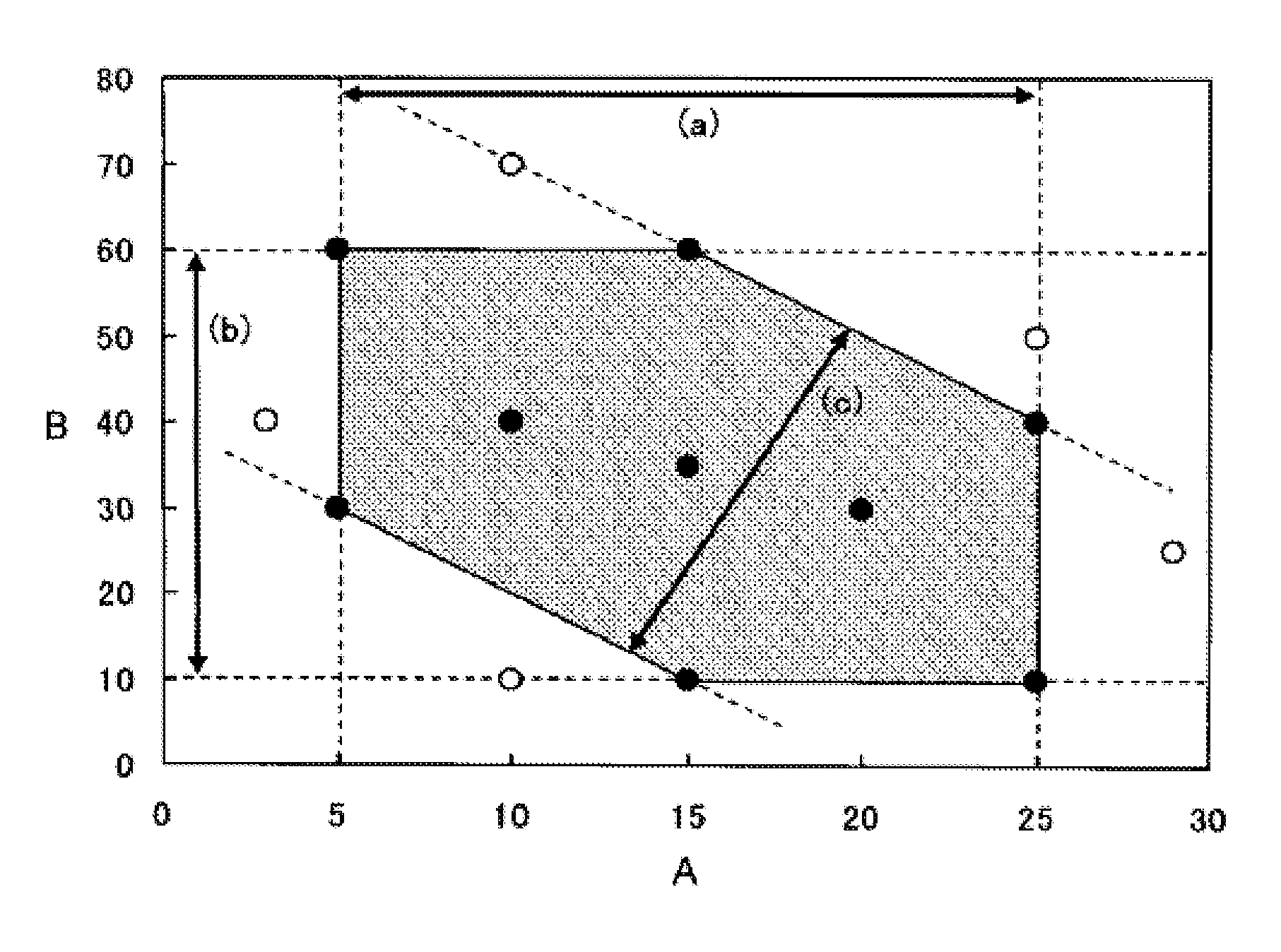Lithium ion secondary battery
a secondary battery and lithium ion technology, applied in the field of lithium ion secondary batteries, can solve the problems of large amount of gas generated to disable battery operation, oxidative decomposition of components of electrolyte solutions, etc., and achieve excellent rate characteristics and high temperature cycle characteristics
- Summary
- Abstract
- Description
- Claims
- Application Information
AI Technical Summary
Benefits of technology
Problems solved by technology
Method used
Image
Examples
example 1
(Preparation of Negative Electrode)
[0057]A negative electrode slurry was prepared by uniformly dispersing, in NMP, graphite powder (average particle size (D50): 20 μm, specific surface area: 1.5 m2 / g) as a negative electrode active material and PVDF as a binder in a weight ratio of 95:5. The negative electrode slurry was applied to copper foil having a thickness of 15 μm used as a negative electrode current collector, followed by drying at 125° C. for 10 minutes to allow NMP to evaporate, thereby forming a negative electrode active material layer. Further, the negative electrode active material layer was then pressed to prepare a negative electrode. The weight of the negative electrode active material layer per unit area after drying was set to 0.008 g / cm2.
(Preparation of Positive Electrode)
[0058]A positive electrode slurry was prepared by uniformly dispersing, in NMP, LiNi0.5Mn1.5O4 powder (average particle size (D50): 5 μm, specific surface area: 1.2 m2 / g) as a positive electrode ...
example 2
[0064]A laminate type battery was prepared and evaluated in the same manner as in Example 1 except that the composition of the nonaqueous solvent contained in the nonaqueous electrolyte solution was changed to FE:EC:DMC=60:20:20 (volume %).
example 3
[0065]A laminate type battery was prepared and evaluated in the same manner as in Example 1 except that LiNi0.5Mn1.5O4 powder (average particle size (D50): 15 μm, specific surface area: 0.7 m2 / g) was used as a positive electrode active material, and the composition of the nonaqueous solvent contained in the nonaqueous electrolyte solution was changed to FE:EC:DMC=10:20:70 (volume %).
PUM
| Property | Measurement | Unit |
|---|---|---|
| temperature | aaaaa | aaaaa |
| particle size | aaaaa | aaaaa |
| volume concentration | aaaaa | aaaaa |
Abstract
Description
Claims
Application Information
 Login to View More
Login to View More - R&D
- Intellectual Property
- Life Sciences
- Materials
- Tech Scout
- Unparalleled Data Quality
- Higher Quality Content
- 60% Fewer Hallucinations
Browse by: Latest US Patents, China's latest patents, Technical Efficacy Thesaurus, Application Domain, Technology Topic, Popular Technical Reports.
© 2025 PatSnap. All rights reserved.Legal|Privacy policy|Modern Slavery Act Transparency Statement|Sitemap|About US| Contact US: help@patsnap.com


